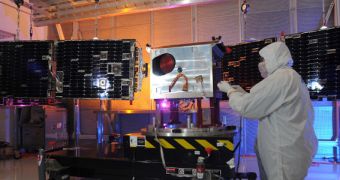On Tuesday, November 19, the US Air Force launched its Space Test Program Satellite-3 (STPSat-3) into low-Earth orbit. Takeoff occurred from the NASA Wallops Flight Facility, on Wallops Island, Virginia. Aboard the freshly-launched spacecraft is an instrument that will measure the energy output of the Sun in unprecedented details.
The tool, called the Total solar irradiance Calibration Transfer Experiment (TCTE), was developed as a part of the US National Oceanic and Atmospheric Administration's (NOAA) Joint Polar Satellite System (JPSS), which is a next-generation asset for investigating weather patterns on Earth.
The STPSat-3 satellite, which launched to space aboard a Minotaur I delivery system, has a total of six instruments, and was assembled at Ball Aerospace & Technologies Corporation, in Boulder, Colorado.
“The TCTE instrument is a creative, fast and low cost solution that will maintain and extend the solar energy data record until the launch of the next such instrument,” explains the director of the JPSS, Harry Cikanek.
The TCTE instrument will collect measurements of the Sun's light at all wavelengths. These data will enable solar physicists to determine how the star influences our planet's atmosphere, and whether or not these interactions play an important part in global warming.

 14 DAY TRIAL //
14 DAY TRIAL //